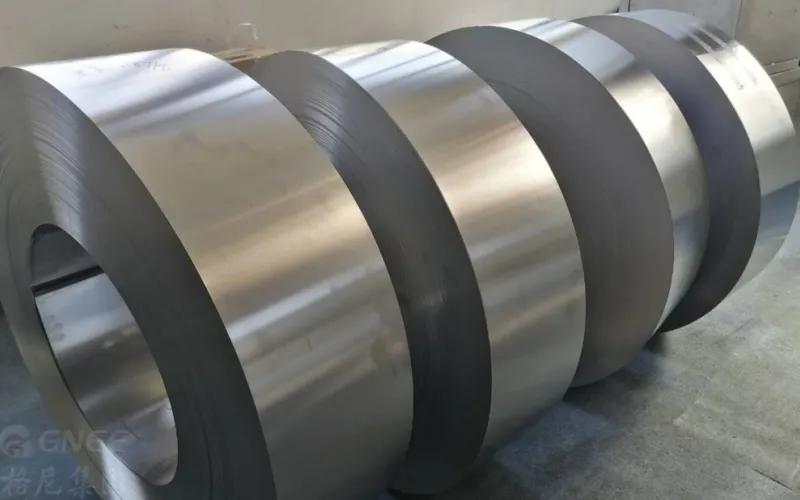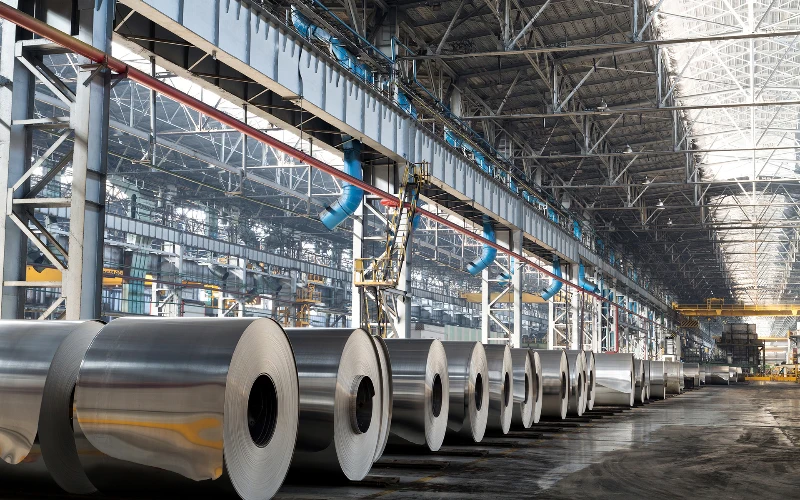Cold rolled silicon steel plates are composed of various chemical elements that play crucial roles in determining their properties and performance. Understanding the composition and impact of these elements is essential in manufacturing high-quality steel plates. This article explores the composition of cold rolled silicon steel plates, the role of each chemical element, the presence of impurities and trace elements, the impact on different properties, and the control and regulation measures implemented in the industry.
The composition of cold rolled silicon steel plates includes several key chemical elements:
- Iron (Fe): The primary component of steel, providing strength and magnetic properties.
- Silicon (Si): Enhances electrical and magnetic properties, reduces core losses, and improves resistivity.
- Carbon (C): Improves hardness and strength.
- Manganese (Mn): Enhances strength, ductility, and hardenability.
- Phosphorus (P): Improves strength and hardness but needs to be controlled within limits.
- Sulfur (S): Enhances machinability but should be limited to avoid detrimental effects.
- Aluminum (Al): Improves resistance to oxidation and scaling during processing.
Role of Each Chemical Element in Cold Rolled Silicon Steel Plate
Each chemical element in cold rolled silicon steel plates serves a specific purpose:

- Iron (Fe): Provides the base structure and magnetic properties of the steel.
- Silicon (Si): Enhances electrical and magnetic properties, reducing energy losses.
- Carbon (C): Improves hardness, strength, and response to heat treatment.
- Manganese (Mn): Enhances strength, ductility, and hardenability.
- Phosphorus (P): Improves strength and hardness but should be controlled to prevent brittleness.
- Sulfur (S): Affects machinability but should be limited to avoid detrimental effects on other properties.
- Aluminum (Al): Improves resistance to oxidation and scaling during processing.
Impurities and Trace Elements in Cold Rolled Silicon Steel Plate
In addition to the main elements, cold rolled silicon steel plates may contain impurities and trace elements:
- Oxygen (O): Present as an impurity, it can affect the steel’s mechanical properties and surface quality.
- Nitrogen (N): Can form nitrides, impacting the steel’s toughness and ductility.
- Copper (Cu): Enhances electrical conductivity and corrosion resistance.
- Nickel (Ni): Improves strength, toughness, and corrosion resistance.
- Chromium (Cr): Enhances corrosion resistance and oxidation resistance.
- Tin (Sn): Improves magnetic properties and corrosion resistance.
- Others: Various other trace elements may be present, depending on the specific steel grade and manufacturing process.
Impact of Chemical Elements on the Properties of Cold Rolled Silicon Steel Plate
The chemical elements present in cold rolled silicon steel plates have significant impacts on their properties:
- Magnetic Properties: Silicon and other alloying elements influence the steel’s magnetic characteristics.
- Mechanical Properties: Elements like carbon, manganese, and phosphorus affect the steel’s strength, hardness, and ductility.
- Electrical Properties: Silicon and other alloying elements improve the steel’s electrical conductivity and resistivity.
- Corrosion Resistance Properties: Elements like copper, nickel, and chromium enhance the steel’s resistance to corrosion and oxidation.
Control and Regulation of Chemical Elements in Cold Rolled Silicon Steel Plate
Various measures are implemented to control and regulate the chemical elements in cold rolled silicon steel plates:

- Quality Standards and Specifications: Industry standards and specifications define the acceptable limits for chemical composition.
- Manufacturing Processes and Techniques: Steel production processes are designed to ensure precise control over the chemical composition.
- Testing and Analysis Methods: Advanced testing and analysis techniques are employed to monitor and verify the chemical composition.
- Quality Control Measures: Stringent quality control measures are implemented throughout the manufacturing process to maintain consistent chemical composition.
- Industry Regulations and Certifications: Regulatory bodies and certifications ensure compliance with safety, environmental, and quality requirements.
Frequently Asked Questions
What are the key chemical elements in cold rolled silicon steel plates?
The key chemical elements in cold rolled silicon steel plates include iron (Fe), silicon (Si), carbon (C), manganese (Mn), phosphorus (P), sulfur (S), and aluminum (Al).
What is the role of each chemical element in cold rolled silicon steel plates?
Each chemical element in cold rolled silicon steel plates serves a specific purpose. For example, iron provides the base structure and magnetic properties, silicon enhances electrical and magnetic properties, carbon improves hardness and strength, and manganese enhances strength and ductility.
Are there any impurities and trace elements in cold rolled silicon steel plates?
Yes, cold rolled silicon steel plates may contain impurities and trace elements such as oxygen (O), nitrogen (N), copper (Cu), nickel (Ni), chromium (Cr), tin (Sn), and others.
How do chemical elements impact the properties of cold rolled silicon steel plates?
The chemical elements present in cold rolled silicon steel plates have significant impacts on their properties. For example, silicon and other alloying elements influence the steel’s magnetic characteristics, while elements like carbon, manganese, and phosphorus affect its strength, hardness, and ductility.
How are the chemical elements controlled and regulated in cold rolled silicon steel plates?
Various measures are implemented to control and regulate the chemical elements in cold rolled silicon steel plates. This includes adhering to quality standards and specifications, employing precise manufacturing processes and techniques, using advanced testing and analysis methods, implementing stringent quality control measures, and complying with industry regulations and certifications.
![]()
![]()